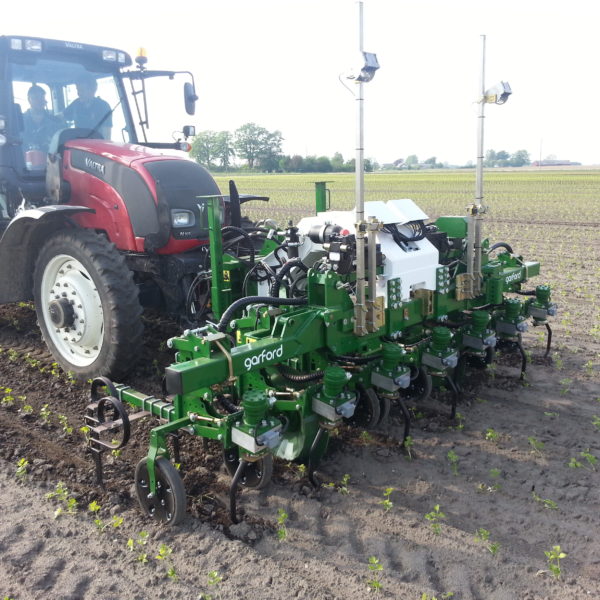

In October, agricultural work was also a final battle. The AID Research Center Director has slightly increased commuting hours due to the relocation of the office.
At present, robotic weeding machines have been developed and commercialized worldwide.
These herbicides can be divided into two types: physical herbicidal (mechanical herbicidal) type, which removes weeds, and chemical herbicidal, which sprays weeds with herbicides.
So, this time, I would like to take up a robotic weeding machine of the “physical weeding” type, which is rich in individuality.
Autonomous driving type
I think that the first thing I think of is a robotic weeding machine like a “cleaning robot” that cleans rooms while running autonomously.
However, the autonomous operation of robotic weeding machines used in fields does not have room walls. Therefore, the most common type is the use of GPS position information and image information from cameras in large fields.
In this case Naïo Technologies,Dino This is a robotic weeding machine.
When a vehicle travels through a field using RTK-GPS position information and images from cameras and reaches the end of the field, four independent wheels are controlled to turn by unique movements.
Herbicidal blade (hoe) is used to remove weeds.
Franklin Robotics’s TertilI is a robotic weeding machine used in a narrow field like a home garden. Just like a cleaning robot, we run around in a field and mince weeds that are less than a certain height with a rotating nylon cord.
The boundary of the field can be recognized by hitting a fence or the like, and the robot can recognize an area that should not be weeded, such as a crop with a small height, by covering the area with a wire around the area.
Tractor work machine type
Some types of robotic weeding machines are used by attaching them to tractors. (Strictly speaking, some have pointed out that they are not robots.)
The advantage of the tractor-mounted type is that it can “attack” the weeds in the vicinity of the crop by correctly recognizing the position of the crop with the image data from the camera. Therefore, even if the operator of the tractor is not well accustomed, if the travel route error is within a certain range, the herbicidal work can be carried out without damaging the crop without being affected by the error.
For robotic weeding machines mounted on this tractorGarford’s RobocropThe camera images are used to recognize the location of the crop and to scrape off weeds with a rotating weeding blade (as if you had a movie with a similar name)…. Herbicidal blades do not rotate in the absence of weeds, but when the crop is recognized, the blades rotate to avoid contact with the crop.
Steketee’s IC-WeederHerbicidal blades are placed on both sides of the crop, and images from cameras are used to recognize the location of the crop, as in the case of a Robocrop.
In IC-Weeder, the weeding blade is closed in the absence of weeds to remove the weeds, but when the crop is recognized, the weeding blade is opened to avoid contacting the crop.
Currently, an automatic steering system using an RTK is capable of traveling in a field with an error range of 2 to 3cm.
In addition, if this automatic steering system is combined with a robotic weeding machine that can precisely control the position of the weeding blade by using a camera, the weeding effect will be enormous.
Using this combined system, female farmers who are weeding by hand while walking around the field can be transformed into tractor operators in response to unexpected situations, thereby reducing the labor burden.
In the future, we would like to expect that our automatic steering system will cooperate with a high-precision work machine using sensing technology.




![[Changes and Important] Changes to the content of some free features and subscription products.](https://agri-info-design.com/wp-content/uploads/2022/11/planchange-en-120x90.png)